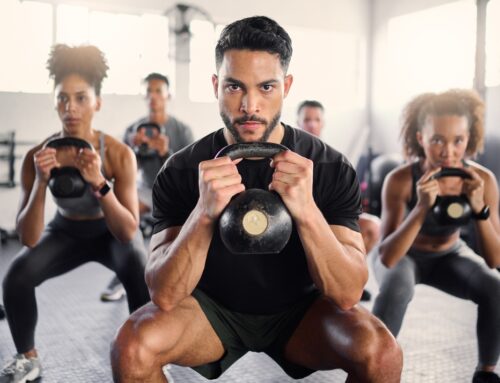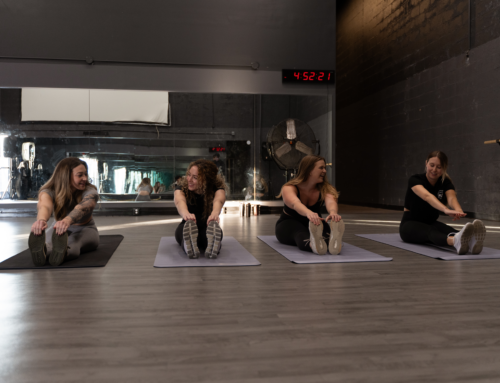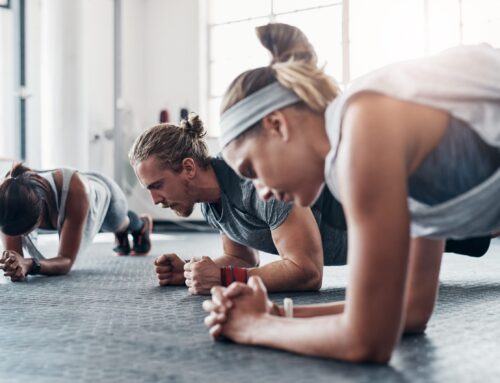Yoga has been on trend in the world of health and fitness due to its many benefits beyond physical exercise. Some of the top athletes, like Michael Phelps and Serena Williams include yoga within their workout routine, as do singers and artists like Lady Gaga.
Many folks look to yoga for lots of benefits from physical to mental ones. While yoga is a great form of exercise to include in your current exercise regime, some may be unsure of the positive results yoga can provide!
What is Yoga?
With roots dating back 5,000 years, yoga is a type of aerobic exercise which combines movements and poses drawn from gymnastics and even wrestling. Yoga focuses steadily on the mindfulness of breathwork, physical posture, strength, and overall focus. This kind of athletic discipline also hones in on flexibility and strength within the body in a more low impact way.
What Are the Different Types of Yoga?
Yoga branches off into different types of yoga routines that focus on different aspects and goals. Yet, both are rooted in the same heartbeat of yoga such as breathwork and flexibility. Some of these different types of yoga are:
- Vinyasa Yoga: Also known as “flow yoga”, Vinyasa Yoga is geared towards beginners as it purposefully uses breathwork to guide, or be in sync with, each movement and pose.
- Restorative Yoga: Relaxation is the name of the game in Restorative Yoga. The goal here is to relax into poses for longer than a minute, while also using yoga props to support the body when needed. This type of yoga is ideal for the person looking to unplug and regulate their nervous system.
- Prenatal Yoga: Prenatal Yoga exists to help moms-to-be find flexibility and movement from pregnancy related muscle pains or tightness.
- Aerial Yoga: If you join in on an Aerial Yoga class, then you will find yourself suspended in the air with the help of a yoga hammock hanging from the ceiling. With the help and support of this type of hammock you can perform specific poses and movements, all while strengthening your flexibility and muscles.
- Power Yoga: The focus in a Power Yoga session will be on quicker movements, or speed, while also focusing on muscle strengthening, power, and flexibility. Power Yoga is usually the type of yoga that studios will follow when doing “hot yoga.”
- Yoga Sculpt: With Yoga Sculpt the focus is of course strength and flexibility, but also with lightweight training for muscle tone.
Reasons to Try Yoga
Some folks may be hesitant to try out yoga initially, as they may be unsure if they can be flexible enough to hold or reach a pose. Even the most avid gym goer may be unsure! While this is a valid concern, it shouldn’t be the thing that prevents you from experiencing all the benefits that yoga can offer. Some of the top reasons to try yoga include:
Improvement of Strength and Flexibility
Many, if not all, of yoga poses focus on stretching and strengthening your muscles for better overall flexibility. You may be thinking, why is this important? Flexibility and stretching your muscles can create a stronger range of motion which can bleed into your performance outside of a yoga class. By incorporating yoga into your set workout routine, you may notice a stronger range of motion or flexibility within your weight lifting routines, for example.
Improvement of Heart Health
The experts at John Hopkins Medicine have noted a connection between heart health and yoga classes by this practice decreasing blood pressure, blood cholesterol, and blood glucose levels. Because of this, yoga is an excellent addition to a workout schedule for the person looking to improve their heart health.
Helps to Prevent Future Injuries
By now, it’s obvious how the driving force within yoga is flexibility, stretching, and strengthening of your muscles. The movements also create functional strength in your muscles and joints over time, which can help to prevent strains or sprains. Think of it as the strengthening and flexibility from Yoga working to prevent injuries that can come from a wrong movement, slip, or even fall.
Breathwork and Its Importance in Yoga
You can’t have a proper yoga session without proper breathwork. Breathwork in yoga almost serves as a guide during movements, poses, and stretches. In a yoga session you’ll typically hear the yoga instructor reminding you to breathe in and breathe out. And this isn’t just to ensure you don’t pass out in session from forgetting to breathe, rather it’s to give you the energy for a stronger stretch and push into the movements. Inhaling and exhaling works to provide relaxation to your body, and focus, so that you can get the most out of your poses and movements.
Best Yoga Poses to Help With Digestion
Digestion issues are extremely common and they can be due to certain diets, IBS, gut issues, or simply hereditary. For those with severe digestive issues, it is always recommended to connect with a local doctor, but yoga can be a tool to help with digestion issues. Certain yoga movements or poses can improve circulation in the body and stretch muscles in the abdomen to impact digestion.
Common yoga poses to help with digestion include:
- Child’s pose: sit on your knees, extend your arms forward while leaning forwards towards the mat, ensure your buttocks stay connected to your heels, palms can be up or down.
- Bow pose: lie face down on your abdomen, lift one leg up and towards lower back, allow each hand to reach backwards to grab the top of each foot (if unable to reach, use a yoga band or resistance band), lift chest off the ground, and set gaze forward with lifted chest.
- Cat cow pose: place your hands and knees on the ground, with your head facing the floor, from here arch your back with your gaze upwards, and then round your back to gaze towards your belly button, slow this process down and repeat for optimal stretching.
Best Yoga Poses to Relieve Anxiety
Anxiety can be debilitating for almost everyone who has experienced it in either a prolonged season of life or a few weeks. In the same way digestive issues should be discussed with your medical provider, mental health concerns or severe anxiety should also be brought up with your doctor.
In addition to therapy, medicine, and group support, yoga can be another excellent outlet to relieve anxiety. Incorporating yoga into your weekly habits can help to slow down racing thoughts, feel more connected to your body, and, with breathwork, guiding you into further relaxation. Many yoga poses can help to release the tension and tightness in our bodies created by anxiety or stress, like the hips or lower back.
Some helpful yoga poses to calm anxiety include:
- Seated forward bend: While seated on your mat, extend your legs forward in front of you, allow your hands to walk yourself down towards the side of your feet, if possible, let hands wrap around feet, while laying head and chest down towards knees, as low as possible.
- Constructive rest: Lay on back, with legs bent at the knee, feet planted on the mat, soften your gaze or close eyes while focusing on inhaling and exhaling.
- Supine Spinal Twist: Lay on your back, completely flat against the mat, with arms extended out to each side, lift and bend right or left knee, and place it outside the other leg while bent, with the opposite arm reach for the crossed knee, and press gently while twisting the torso with the side of the arm pressing down. Be sure to inhale and exhale with each motion.
Best Yoga Poses to Relieve Back and Neck Pain
Neck and back pain can be, quite frankly, a real pain! Many who suffer from back or neck pain, either from sitting all day, staring at a computer screen, or simply lacking movement in their day to day, can definitely benefit from the stretching of yoga. Of course, if this pain is chronic, you will want to touch base with your medical provider, but it won’t hurt to incorporate yoga into your weekly exercise routine. Yoga movements and poses can offer not just relaxation to the body, but also stretching to problematic muscle groups like the back and neck.
Yoga poses to try to relieve back and neck pain include:
- Sphinx pose: Lay completely face down on your mat, lift upper chest and head with the support of your elbow while keeping everything below the lower abdomen connected to the mat. Once elbows are planted on the mat, extend chest forward while gazing upwards.
- Seated neck stretch: While seated on the mat, either with legs crossed or extended, ensure you are seated straight without overextending your spine, place one arm above and over your head reaching for the opposite side of the head towards the ear reaching for the neck. While gently pressing and stretching the neck towards the side of the arm being used, you can use the other arm to flex to the side for a further stretch and support, repeat with the other side.
- Camel pose: Stand on your knees facing forward, place both hands gently on the lower back, arch back while pushing hips forward with gaze looking up with the movement of the back arching, repeat slowly and with intent for optimal stretching. If flexibility allows, you can move your hands down and rest on your ankles for a deeper stretch.
With all of these yoga poses and movements, it can be hard to fully understand them without the proper instructions from a skilled yoga instructor, especially in-person! At Carbon Performance we offer two types of yoga sessions with skilled and dedicated instructors to ensure you are hitting each pose and movement correctly.
Yoga and Sleep
After a yoga session you may find yourself to be a bit sleepy, or find that you fall asleep, and stay asleep, faster than before. This is usually due to breathwork providing relaxation to your body, and focus offering a space of calmness in your mind. In addition, your body itself will be a little tired from all the stretching, moving, and flexibility that your muscles will be asking for a moment or two of rest! All of these factors can create optimal sleep for those who are especially looking to improve the quality, and quantity, of their sleep.
Some Common Questions About Yoga
How Does Yoga Change Your Body?
While yoga is not considered a high impact exercise, which could result in strong muscle gain, yoga still can change your body physically and mentally. Physically speaking, you may notice more definition of muscle groups if light weights are incorporated into a yoga routine, such as sculpt yoga. Over time you may notice a difference in stress and anxiety with the help of routine, but again, consistency is key in seeing physical and mental changes from yoga.
How Many Times a Week Should You Do Yoga?
Incorporating yoga into your workout routine can help to break up the monotony that can come with consistent visits to the gym. Depending on your goals, and what is realistic for you, it is recommended to join in on a yoga session 3 to 5 times a week. If you can’t commit to a full hour with a yoga class, you can also include a 15 minute yoga session with specific poses and movements before or after a workout.
What Essentials Do You Need for Yoga?
Most gyms that offer yoga classes will already have the basic equipment needed for a successful session! But, if you’re looking to invest in your own equipment, here are some yoga essentials you will need:
- Quality yoga mat
- Yoga block(s)
- Yoga straps
- Resistance band
- Comfortable clothing that allows a wide range of motion
Can Yoga Help with Arthritis?
Yes, for those who suffer from arthritis, yoga can offer relief and comfort. Since the main focus of yoga is stretching, mobility, and balance it can help with the body’s range of motion. Yoga also works to strengthen the muscles around the joints and, over time, can lessen the pain associated with arthritis.
Here are some yoga poses to consider if you suffer from arthritis:
- Seated spinal twist: Begin in a seated position on the floor with your legs extended in front of you, back straight, sitting tall. Place your right foot over to your left outside thigh, with your left leg flat, but your right leg bent, knee towards the ceiling. Allow your right hand to sit behind you for support. Connect the left elbow to the outside of your right knee, while gently twisting your spine towards the right, gently looking over your shoulder. Hold for 20 to 30 seconds, release, then repeat on the other side.
- Child’s pose: Begin in a tabletop position, with your wrist under your shoulders, and knees under your hips. Let big toes touch, while widening knees, shift hips back towards your heels, extend arm forwards towards the mat, and rest your forehead on the mat. Hold pose for 30 seconds. Repeat as often as you would like.
- Cat-cow pose: Begin in a tabletop position, spread fingers wide, keep back flat with gaze down, on the first inhale, arch back by dropping belly towards the mat, lifting your head and tailbone towards the ceiling, keeping neck long and chest/shoulder blades open. On the exhale, round the spine by tucking the tailbone and drawing the belly button towards the spine. Place chin to chest, press through hands to open space between the shoulder blades. Repeat with the flow of your breath 5 to 10 times.
Yoga Classes at Carbon Performance
If you are ready to join in on the yoga fun in a group setting with a skilled instructor, then join us at a Carbon Performance location near you! We offer two types of yoga classes, yoga sculpt and recovery yoga flow.
While at Carbon, you can also stop by the weight floor for more muscle gain, or pay a visit to our modern treadmills for a nice walking recovery.
Whichever your exercise of choice, we have all the selections with top equipment and dedicated trainers to help you on your fitness journey. Contact us today to learn more and be sure to check us out on our socials. We look forward to seeing you on the mat!








